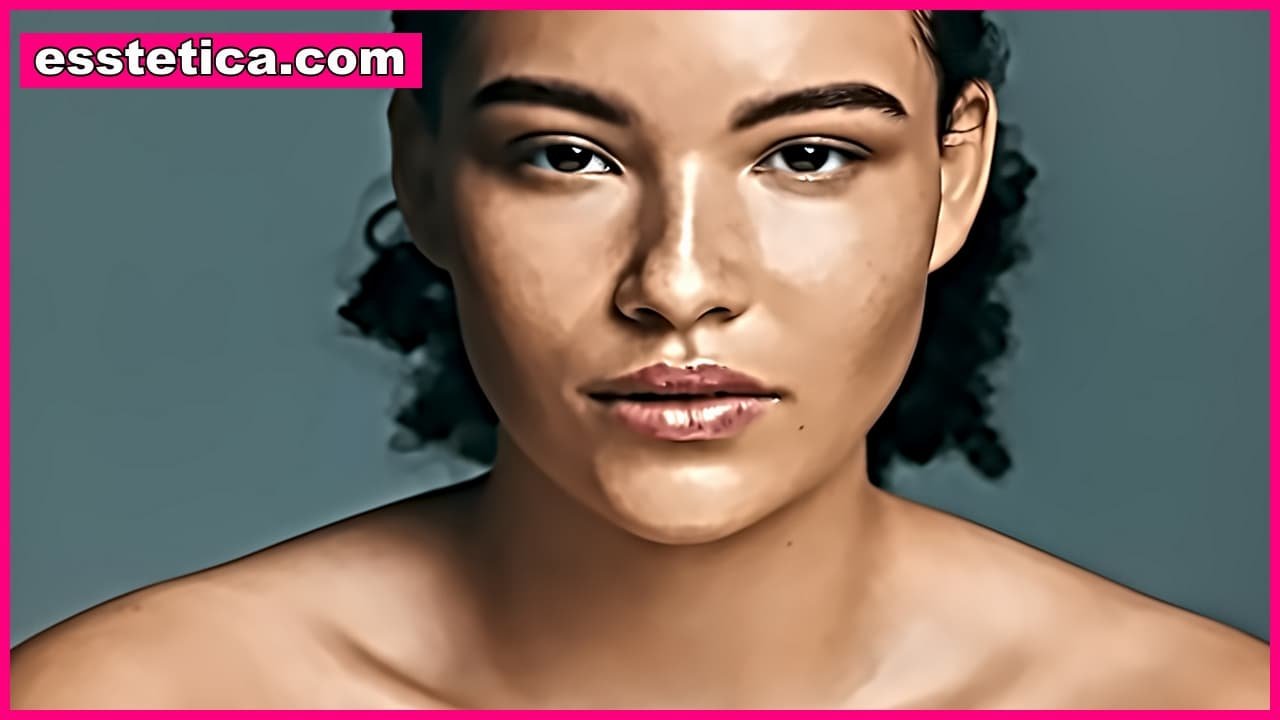Acne isn’t just random — it’s often your body’s way of sending messages through your skin. The location of your breakouts can reveal deeper insights into what’s going on inside your body, from hormones to digestion to stress. Understanding where acne is located and what it means can help you target the root cause, not just the surface problem.
Let’s decode the acne map — region by region — and uncover what your breakouts are trying to tell you.
Understanding Face Mapping: The Science Behind Breakout Locations
Face mapping is an ancient practice that connects areas of the face with internal organs and body systems. While modern dermatology doesn’t fully endorse it as a diagnostic method, it aligns closely with what we now know about hormones, oil production, and lifestyle triggers.
Think of your skin as a mirror. When something’s off — poor diet, hormonal changes, or stress — it often shows up in predictable places.
1. Forehead Acne — The Digestive and Stress Connection
What It Means
Breakouts on your forehead often point to digestive imbalances or stress-related issues. This area is closely linked with your gut health and liver detoxification.
Possible Causes
-
Eating too many processed or sugary foods
-
Lack of hydration
-
Irregular sleep or high cortisol levels
-
Hair products clogging pores (yes, even that dry shampoo)
What You Can Do
To calm forehead acne:
-
Drink more water — at least 2 liters a day.
-
Cut back on sugar and greasy foods.
-
Cleanse gently, especially along the hairline.
-
Try adding probiotics or green tea for digestive balance.
A simple routine tweak like washing pillowcases more often or avoiding heavy hair oils can also make a big difference.
2. Cheek Acne — The Environmental Zone
What It Means
If you’re breaking out on your cheeks, especially the sides closer to your nose or jaw, this might signal external irritation or pollution exposure rather than internal imbalance.
Common Culprits
-
Dirty phone screens (loaded with bacteria!)
-
Pillowcases that aren’t changed frequently
-
Air pollution and smog
-
Smoking or exposure to secondhand smoke
What You Can Do
-
Sanitize your phone daily.
-
Avoid touching your face during the day.
-
Opt for non-comedogenic makeup and skincare.
-
Add antioxidants like vitamin C to your routine to fight free radicals.
💡 Pro tip: If you sleep on one side more than the other and notice breakouts there — your pillow might be the hidden enemy.
3. Nose Acne — The Heart and Oil Connection
What It Means
Your nose is in the T-zone, one of the oiliest parts of your face. Breakouts here often relate to clogged pores, excess sebum, or sometimes even blood pressure and circulation.
Possible Causes
-
Overproduction of oil
-
Blackheads and clogged pores
-
Stress or high-fat diet
-
Hormonal imbalance affecting oil glands
What You Can Do
-
Use a salicylic acid cleanser to clear pores.
-
Exfoliate gently once or twice a week.
-
Keep your blood pressure and cholesterol in check through diet and exercise.
-
Avoid over-cleansing — it can make your skin produce even more oil.
4. Chin and Jawline Acne — The Hormonal Zone
What It Means
Acne on your chin, jawline, or around the mouth is one of the clearest signs of hormonal imbalance. This area reacts strongly to fluctuating androgens (like testosterone) that increase oil production.
Typical Triggers
-
Menstrual cycle changes
-
PCOS or thyroid issues
-
Stress and lack of sleep
-
Excess dairy or high-glycemic foods
What You Can Do
-
Track your cycle — note when breakouts appear.
-
Limit dairy and sugary snacks.
-
Try supplements like zinc or omega-3 fatty acids.
-
Use gentle retinoids or benzoyl peroxide products to prevent clogged pores.
🩸 Note: Hormonal acne often comes in deep, painful cysts — not just surface pimples — and usually appears in the same areas each month.
5. Temples and Hairline Acne — The Product or Hormone Zone
What It Means
Breakouts near your temples or along the hairline can signal issues with hair products, makeup, or even adrenal stress.
Possible Causes
-
Oils and silicones in shampoo or conditioner
-
Sweat from exercise not being cleansed properly
-
Hormonal shifts due to stress or diet
What You Can Do
-
Use sulfate-free hair products.
-
Wash your face after working out.
-
Keep bangs clean and off your forehead.
-
Manage stress through breathing exercises or yoga.
This type of acne often clears up quickly once you switch to cleaner products.
6. Back and Shoulder Acne — The Body Detox Zone
What It Means
Body acne is often tied to sweat, tight clothing, or hormonal fluctuations, but it can also reflect how well your body is detoxifying.
Common Triggers
-
Sweaty gym clothes not changed soon enough
-
Heavy lotions clogging pores
-
Stress or hormone surges
-
Gut imbalances or toxin buildup
What You Can Do
-
Shower right after workouts.
-
Use a benzoyl peroxide body wash.
-
Exfoliate gently with salicylic acid sprays.
-
Avoid synthetic fabrics that trap sweat.
If your back acne flares up around the same time every month, hormones might be part of the story.
7. Neck and Chest Acne — The Stress and Hormone Overlap
What It Means
Breakouts on your neck and chest often appear when cortisol (the stress hormone) spikes or when sweat mixes with friction.
Potential Causes
-
Tight collars or necklaces
-
Perfumed body lotions
-
Hormonal fluctuations during stress
-
Overheating or sweating during sleep
What You Can Do
-
Use lightweight, fragrance-free moisturizers.
-
Sleep in breathable fabrics.
-
Keep stress in check — cortisol can directly impact sebum production.
-
Try a cold compress for inflammation relief.
✅ Struggling with acne? Discover the 2 natural solutions I personally recommend:
👉 Get Ninja Health Now — Launch Your Health Site in 60 Seconds
8. Around the Mouth — The Digestive Link
What It Means
Pimples around your mouth or chin area can signal digestive troubles or food sensitivities, especially to dairy or gluten.
Common Causes
-
Hormonal imbalances (especially in women)
-
Eating processed foods or dairy
-
Using toothpaste with irritating ingredients
What You Can Do
-
Switch to a fluoride-free toothpaste.
-
Eat more fiber-rich vegetables and probiotics.
-
Use calming ingredients like niacinamide or green tea extract.
🍃 Pro tip: Keeping a food diary can help you spot patterns between what you eat and where acne flares appear.
9. Acne on the Ears — The Kidney Connection
What It Means
Traditional face mapping connects ear acne to kidney function and hydration levels.
Possible Causes
-
Not drinking enough water
-
Excess salt in your diet
-
Dirty headphones or earbuds
What You Can Do
-
Hydrate well — aim for at least eight glasses a day.
-
Clean your earbuds regularly.
-
Avoid overly salty snacks and processed foods.
10. Acne on the Hairline or Scalp — The Product Build-Up Problem
What It Means
Acne near your scalp or hairline usually points to product buildup or oily residue.
Possible Causes
-
Greasy styling products or conditioners
-
Infrequent hair washing
-
Wearing hats for long periods
What You Can Do
-
Use a clarifying shampoo weekly.
-
Keep hair products away from your skin.
-
Wash hats and headbands often.
How to Read Your “Acne Map”
| Region | Possible Cause | Recommended Fix |
|---|---|---|
| Forehead | Digestion, stress | Hydrate, clean diet, better sleep |
| Cheeks | Bacteria, pollution | Sanitize phone, change pillowcases |
| Nose | Oil production | Exfoliate, control sebum |
| Chin/Jawline | Hormones | Track cycle, limit dairy |
| Temples | Hair products | Go silicone-free |
| Back | Sweat, toxins | Shower post-gym, wear breathable clothes |
| Neck/Chest | Stress | Reduce cortisol, avoid friction |
| Mouth | Digestion | Adjust diet, fluoride-free toothpaste |
| Ears | Kidneys | Stay hydrated |
| Scalp | Product buildup | Clarify weekly |
When to See a Dermatologist
While understanding where acne is located and what it means can help you identify root causes, persistent or painful breakouts should always be checked by a dermatologist. You might need prescription treatments, hormone tests, or specialized skincare.
A professional can also help differentiate between acne, rosacea, and folliculitis, which often look similar but require different treatments.
Final Thoughts: Your Skin Is Speaking — Listen Closely
Acne isn’t just a skin issue; it’s a message. Where it appears — your forehead, chin, or cheeks — can give you valuable clues about your internal balance, lifestyle, and daily habits.
Instead of just treating pimples on the surface, pay attention to their location and timing. Every breakout has a story, and understanding it is the first step toward truly clear, balanced, and healthy skin.
Key Takeaway:
Knowing where acne is located and what it means transforms skincare from a guessing game into a guided map — one that leads you not just to clearer skin, but to a healthier, more balanced you.
✅ Struggling with acne? Discover the 2 natural solutions I personally recommend:
👉 Get Ninja Health Now — Launch Your Health Site in 60 Seconds
YOU MAY ALSO LIKE:
Where Acne Studios From? The Story Behind Sweden’s Most Stylish Minimalist Brand






